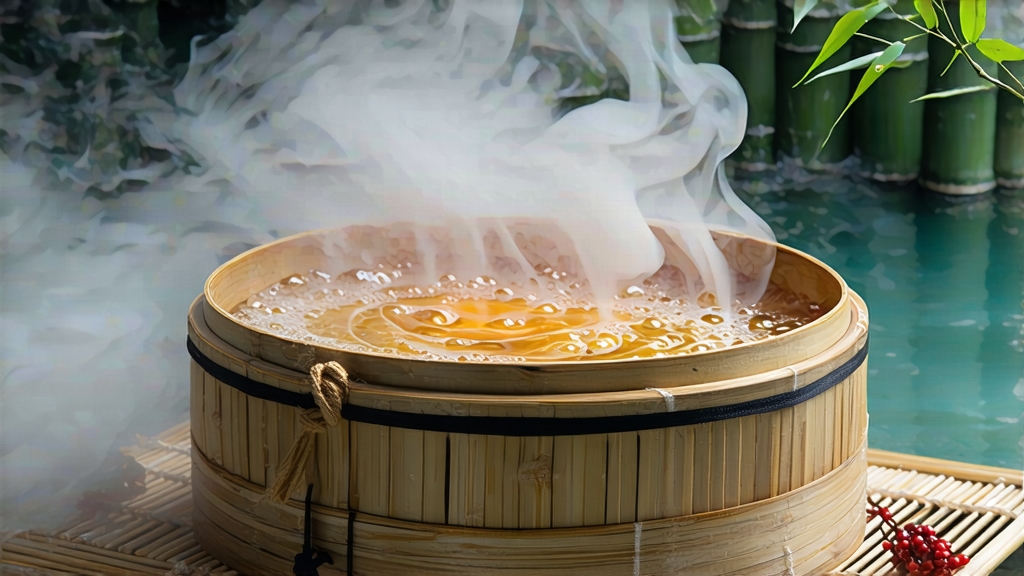
Tucked away in the southern folds of Guangxi Province, where the Xun and Gui Rivers braid through limestone peaks, Liu Bao tea has quietly matured for five centuries. To most of the world “dark tea” means Pu-erh, yet Liu Bao is the older ancestor—born in the Ming dynasty, traded along the same Ancient Tea Horse Road, and once prescribed by Qing-era pharmacists for “dissolving grease and awakening the spleen.” Today its deep, camphor-sweet liquor is resurfacing on specialty menus from Berlin to Melbourne, inviting drinkers to reconsider what “black tea” can mean in China’s spectrum of post-fermented leaves.
Liu Bao is not a brand but a place: the six ancient bao—village clusters—of Cangwu County surrounding the town of Wuzhou. Within this micro-region three traditional leaf grades are recognised: Special (one bud, two leaves), First (one bud, three leaves), and Second (one bud, four leaves). Modern factories add numbered grades (3, 4, 5) that correspond to leaf size and plucking season, yet connoisseurs still follow the pre-1950s nomenclature because it predicts cellar-aging behaviour better than any metric on a spec sheet.
The craft begins in late April when the subtropical sun thickens the leaf’s cuticle. Pickers work between 9 a.m. and noon to avoid overnight dew and afternoon showers; the goal is a leaf that bends without snapping, signalling 68–70 % moisture—ideal for the kill-green wok. Sha-qing lasts only three to four minutes at 200 °C, shorter than for green tea, because the purpose is to halt oxidative enzymes while preserving microbial spores that will drive the later “wet piling” fermentation. Rolling is done in 25 kg batches on century-old cast-iron plates; the pressure is modulated twice to keep 30 % of the stems unbroken, creating air channels crucial for the next stage.
What distinguishes Liu Bao from other dark teas is its unique “dui-wo” (wet piling) performed not in Yunnan’s dry climate but in Wuzhou’s 85 % humidity basements. Leaves are piled 70 cm high, sprayed with mineral-rich river water, and covered with jute sacks. Inside the stack temperature climbs to 55 °C within 36 hours; every 48 hours the pile is turned, sprayed again, and re-covered. After 10–14 cycles the leaf colour shifts from olive to umber, and a faint camphor-cedar perfume appears—an aroma that will deepen into the famed “Song wood” note after years of aging. Microbiologists have isolated Eurotium cristatum (the “golden flower” also found in Fu brick) as the dominant species, along with local Wallemia strains that thrive on the high potassium content of the karst soil.
Once fermentation is judged complete—traditionally by chewing a leaf until it tastes sweet at the back of the throat—the tea is sun-dried on bamboo mats for three days, then moved to shaded verandas where it “rests” for one lunar month. The final act is the bamboo basket press: 50 kg of leaf are tamped into cylindrical wicker containers lined with wild banana leaves, compressed by foot until the basket ribs creak, then laced tight with rattan. These baskets (biao-long) are stacked in riverside warehouses where the diurnal temperature swing is 8–10 °C; over decades the tea breathes through the wicker, exchanging volatiles with the camphor-wood rafters above.
To brew Liu Bao well one must unlearn black-tea habits. The leaf is hardy; boiling water is welcome. Start by rinsing 5 g per 120 ml in a clay teapot that has previously brewed only dark teas—porous Yixing zi-sha or the softer Guangxi zhou-ni both amplify the deep bass notes. Use 100 °C water, pour slowly to avoid basket fragments, and discard the 5-second rinse. The first proper infusion should steep 15 seconds, the second 10, then add five seconds for each subsequent pour. A 1990s basket will yield 12–15 inflections before the flavour plateaus, each layer moving from camphor and molasses to dried longan, wet slate, and finally a cooling mint that lingers on the molars. If gongfu paraphernalia are not at hand,